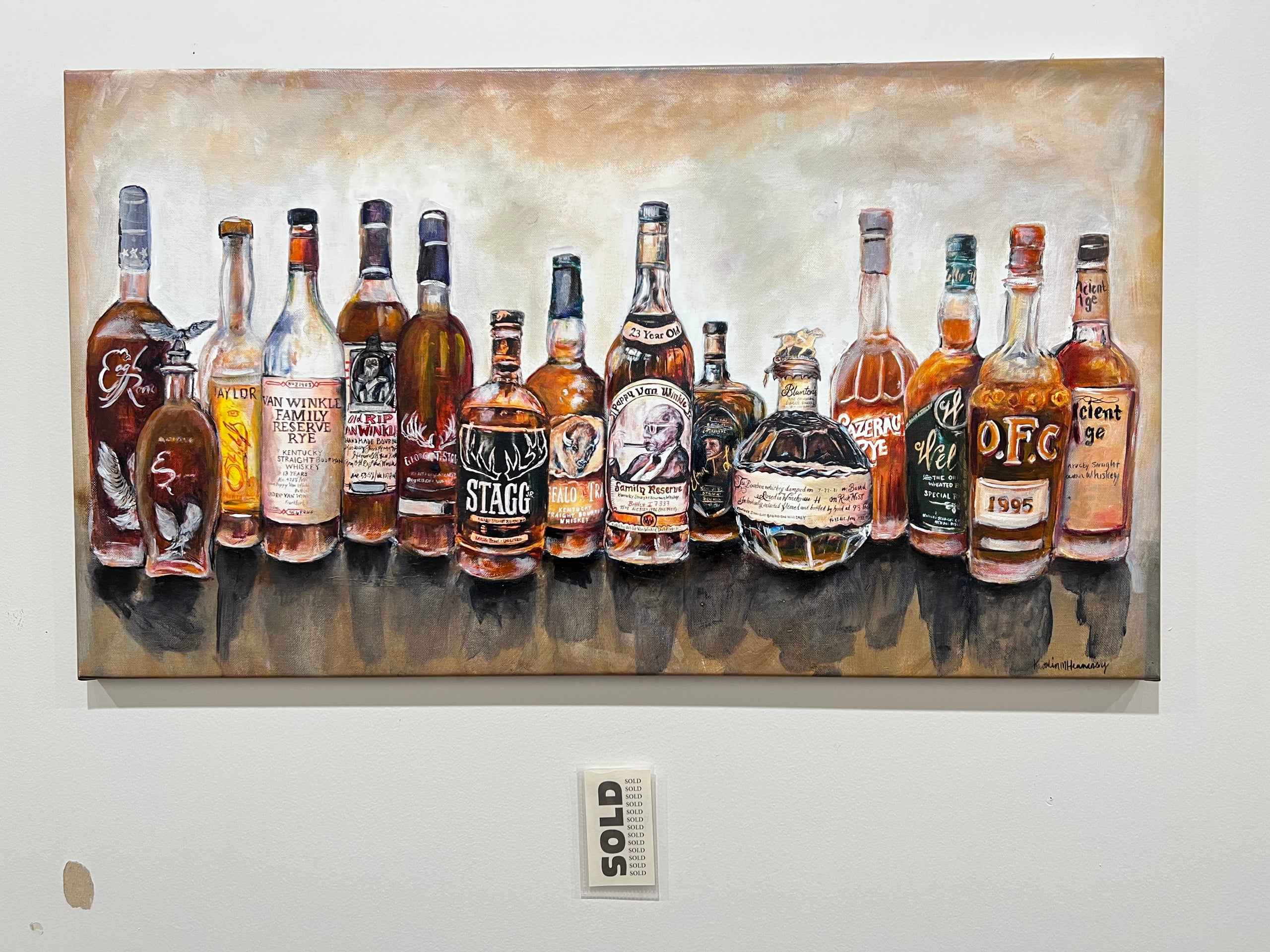Realism Art in the Whiskey Industry: Illustrating Moments of Distillation
Realism Art in the Whiskey Industry: Illustrating Moments of Distillation
Blog Article
Catching the Essence of Scotch Art Through Distinct Aesthetic Depictions and Designs
The art of bourbon extends beyond the fluid itself, manifesting through a selection of visual representations that envelop its fabled heritage and workmanship. What continues to be to be uncovered is exactly how these progressing styles mirror not only the whiskey itself however also the changing landscape of artistic interpretation. Whiskey Art.
The History of Bourbon Art

As whiskey manufacturing spread, so as well did the wish to elevate its experience through art. From the intricate engravings on very early casks to the fancy tags of modern-day containers, each aspect mirrors an one-of-a-kind artistic vision, working as a visual story of the bourbon's heritage.
In the 19th and 18th centuries, the rise of the industrial transformation further improved bourbon art, resulting in cutting-edge product packaging and advertising that caught consumer interest. Musicians and developers started try out looks, imbuing whiskey-related images with symbolic definitions that shared concepts of craftsmanship, custom, and neighborhood.
Today, bourbon art proceeds to evolve, mixing traditional approaches with modern art types. Realism Art. This continuous discussion between the spirit and its graph emphasizes the enduring bond between bourbon and society, enriching the total experience for fanatics worldwide
Iconic Bottle Layouts
While several aspects add to the attraction of whiskey, iconic container styles play a crucial function fit consumer assumption and improving the total experience. The aesthetic discussion of bourbon bottles is not simply an aesthetic consideration; it serves as a bridge between the consumer and the product, evoking emotions and setting assumptions.
Distinct shapes, products, and closures can raise a bourbon brand's identity, making it instantaneously recognizable on jampacked shelves. The traditional Glenfiddich bottle, with its stylish conical shape, communicates a feeling of practice and workmanship, while the vibrant, contemporary layout of the Balvenie bottle mirrors innovation and class. The usage of tinted glass or special structures can suggest the quality and personality of the scotch within.
Legendary layouts usually incorporate elements of cultural heritage, representing the brand's background and link to its roots. Brands like Jack Daniel's utilize a simple, durable design that reverberates with its American scotch heritage. Ultimately, the effect of container style extends past plain performance; it envelops the significance of the brand name, inviting consumers to check out and delight in the rich tapestry of whiskey society.
Tag Artwork and Branding
Bottle layouts often set the phase of what customers can anticipate, yet tag art work and branding play a just as substantial role in connecting a whiskey's identity. The label works as the initial factor of get in touch with in between the product and the customer, encapsulating the essence of the scotch within its aesthetic elements.
Reliable tag artwork linked here incorporates imagery, color, and typography to create a story that reverberates with the brand name's heritage and target market. As an example, a label featuring classic font styles and intricate images may evoke a sense of custom and craftsmanship, interesting connoisseurs. In contrast, vibrant colors and modern design elements could attract a more youthful market looking for innovation and enjoyment.


Photography and Visual Narration
Catching the essence of scotch via photography and aesthetic narration is an art type that elevates the brand name experience. This tool transcends plain product depiction, diving into the complex stories that surround each bottle. By using engaging imagery, photographers can stimulate feelings that resonate with customers, eventually creating a deeper connection to the whiskey brand name.
Aesthetic narration in scotch digital photography commonly makes use of rich textures, lighting, and make-up to highlight the one-of-a-kind qualities of the spirit. The interplay of light and shadow can highlight the amber tones of bourbon, while the choice of background components-- such as rustic barrels or elegant glasses-- can strengthen the brand's heritage or way of living organizations.
Additionally, capturing the ritualistic aspects of bourbon usage, from the putting to the tasting, welcomes customers into a sensory experience, permitting them to think of the tastes and fragrances that await. Each photo not just showcases the item but likewise tells a story of workmanship, practice, and the minutes that scotch can enhance - Limited Edition. Hence, digital photography comes to be a powerful device in verbalizing the identity of scotch brand names, placing them within the more comprehensive social landscape
Emerging Fads in Whiskey Art
The development of bourbon art is progressively shaped by contemporary patterns that mirror broader social shifts and consumer preferences. This change not only highlights the value of sustainability yet also boosts the story bordering bourbon production.
Furthermore, electronic art has actually risen in appeal, enabling cutting-edge representations of whiskey. Artists are leveraging technology to craft immersive useful link experiences, such as augmented truth installations that engage audiences and give a much deeper understanding of bourbon's cultural relevance. This trend likewise includes social networks platforms, where visually striking web content gathers focus and promotes area amongst fanatics.
In addition, collaborations between whiskey brand names and musicians are ending up being much more typical. These partnerships yield limited-edition packaging layouts and unique art work that commemorate both the Continued workmanship of scotch and the imagination of artists. As bourbon art continues to progress, these arising trends will undoubtedly form its future, cultivating a dynamic junction of society, sustainability, and technology within the scotch area.
Conclusion
To conclude, the art of whiskey includes a diverse range of visual depictions that show its abundant heritage and craftsmanship. From iconic bottle layouts and detailed tag artwork to engaging photography, each component adds to a broader story that improves the consumer's experience. As emerging patterns, such as digital art and sustainability, continue to shape this creative landscape, the diverse identification of whiskey stays an enduring resource of social connection and expedition.

In verdict, the art of scotch includes a varied range of aesthetic depictions that reflect its abundant heritage and craftsmanship.
Report this page